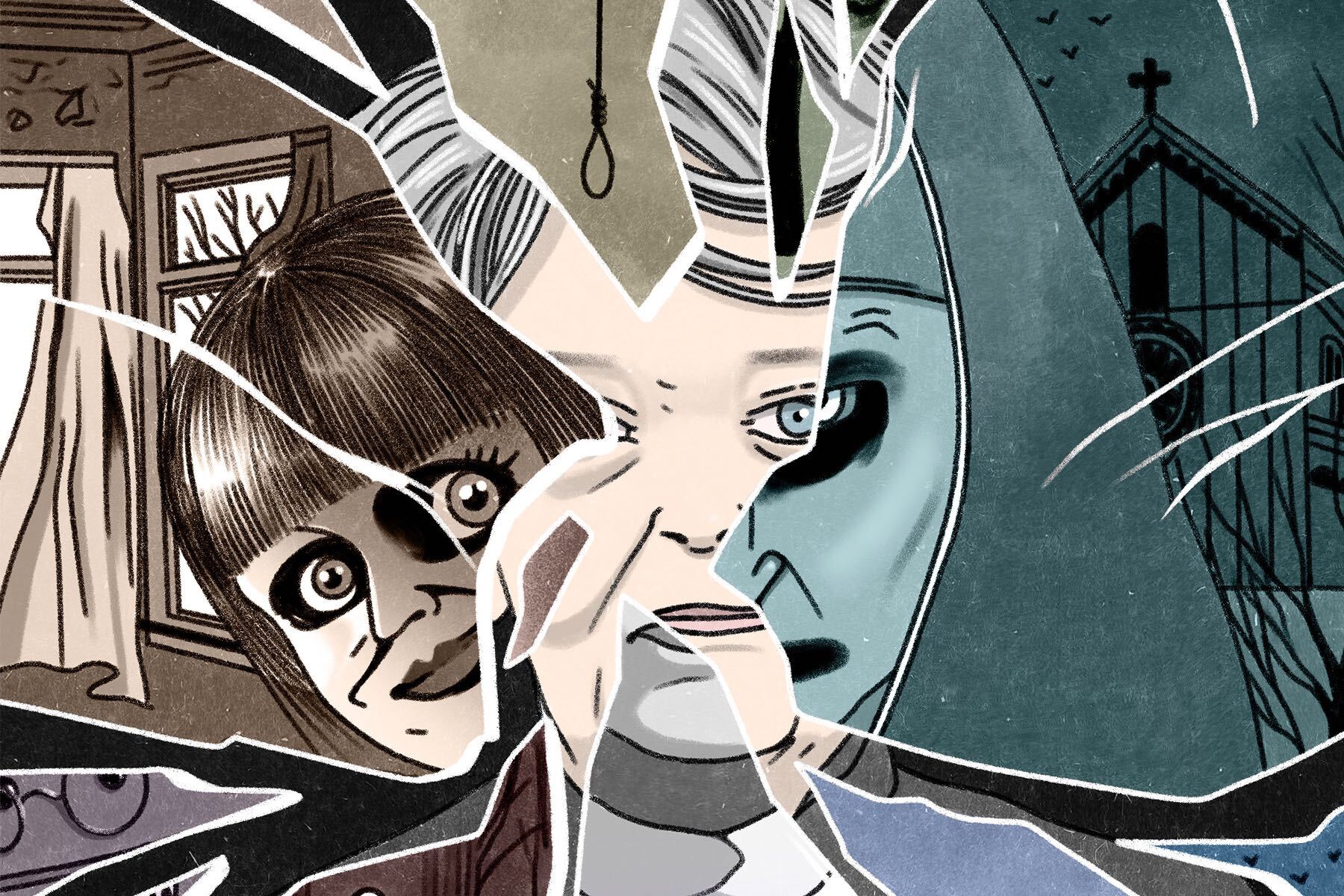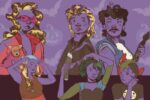With Halloween just around the corner, my days are full of crisp autumn air, chai tea and horror film marathons. One of the most renowned additions to recent horror film history is “The Conjuring” and its sequels based on the case files of demonologist duo Ed and Lorraine Warren. There is a lot of mystery surrounding the validity of the paramount characters’ findings, and I couldn’t resist delving into the rabbit hole of the history of the Warrens and the cases that laid the foundation for “The Conjuring” universe.
Before she was known as Lorraine Warren, she was born in Bridgeport, Connecticut, into a Catholic household. At the age of nine, while attending Catholic school, Lorraine reports that she began seeing auras around people and presumed they were a common occurrence for everyone. It wasn’t until she informed one of her teachers of the strange lights she was seeing that she began to realize she may have clairvoyant abilities.
Ed was born into a similarly religious household as Lorraine, but his view of the spirit world was heavily influenced by living in a home he believed to be haunted by an active spirit known for slamming doors and emitting unexplainable lights. When these unexplainable events would occur, Ed’s father taught him to always use logic before immediately attributing the occurrence to something supernatural. This sentiment would influence the way Ed approached paranormal activity later in life.
The couple met at the age of 15 prior to Ed’s enlistment at 17 during World War II. While deployed in the Navy, Ed’s ship caught fire and sent him overboard into icy North Atlantic waters. As Ed prayed for survival while desperately awaiting rescue, Ed had an epiphany that made him realize he needed to marry Lorraine as soon as he returned to the States. This event had a profound impact on the Warrens’ views of spirituality, and prepared them for the myriad harrowing moments they’d have together in their decades of studying the paranormal.
In the early days of their work, in 1952, the couple began traveling in search of locations with alleged hauntings. When they’d find a location that would pique their interests, they’d ask the owners for permission to investigate. How, you may ask? Paintings. Yes, paintings.
After serving in the Navy, Ed attended Perry Art School and would use his skills to paint haunted Connecticut homes or even depictions of the demons Lorraine would envision, much like the painting of the nun from “The Conjuring.” To gain a warm welcome into a possible haunted home, Ed would stand in the yards of these houses, paint a portrait and offer the owners his work in exchange for letting him and Lorraine search the home for paranormal activity.
The duo became renowned for their controversial work in demonology and were amongst the first notable paranormal researchers in the country. This is exactly what led to Carolyn Perron seeking out help from the Warrens in 1971 following her family’s move into a terrifyingly haunted home originally built in 1736.
“The Conjuring” franchise starts with the Perron family case. Following their move into a farmhouse, the family realizes they are being haunted by an angry demonic presence known as Bathsheba, who has terrorized the property since her suicide and becomes malevolent when new occupants move into the home. When researching, I found that multiple historical documents validate the existence and demise of an ostracized woman named Bathsheba Thayer, but things grew interesting when I began looking into accounts from other homeowners of the property.
Following the release of “The Conjuring” in 2013, Warner Bros. Studios came under legal fire when homeowners Norma Sutcliffe and Gerry Helfrich of the former Perron family property sought legal action for a lack of privacy protection from the studio. Fans of the film discovered the address and began trespassing onto the property.
In an interview with the Boston Globe, Sutcliffe lamented: “It won’t end. It’s like Amityville … Can you imagine the horror of trying to sell this house?” Sutcliffe and Helrich have owned the house since 1987 and report that prior to the release of the film, the property was peaceful and not once did they ever feel unsafe in the home until the trespassing began in 2013. This posed the question: “What was the truth behind the investigations conducted by the Warrens?”
Two polarizing cases the Warrens consulted on were the Enfield poltergeist case and the Amityville haunting that both served as the foundation for “The Conjuring 2.” These are cases that went under an intense amount of scrutiny due to the explosive nature of the evidence that came from the Warrens’ involvement. Both hauntings were quickly declared the subjects of legal ownership that would later become the basis for film rights. This raised eyebrows as it questioned the integrity of both investigations.
Despite the movie’s portrayal, Ed and Lorraine only visited the Enfield home on one occasion and only attained a minimal amount of evidence to corroborate the claims made about the household. In reality, the couple only consulted for one day after arriving unannounced (no paintings in tow). One of the most damning pieces of evidence against the credibility of the Warrens came following the Enfield case.
In George Brittle’s book “The Demonologist,” Ed said “…inhuman spirit phenomena were in progress. Now, you couldn’t record the dangerous, threatening atmosphere inside that little house. But you could film the levitations, teleportations, and de-materializations of people and objects that were happening there — not to mention the many hundreds of hours of tape recordings made of these spirit voices speaking out loud in the rooms.” For many readers, this quote insinuated that the case was a hoax only “provable” by audio tapes and a sensationalized story.
Much like in the Enfield case, a crucial point of contention in the Amityville haunting was the constantly changing and sensationalized stories that began developing following the Lutz family’s involvement with author Jay Anson, Butch DeFeo’s lawyer William Weber, and the Warrens. A popular theory was that the Lutz family knew of the gruesome murders that occurred in the home and set out to profit from the story of a terrifying haunting spurred by the tragedy.
In “The Amityville Horror: A True Story,” Weber stated that the events were all a hoax he corroborated to capitalize on once it became a film based on a heavily embellished book Jay Anson would write about the home. Interestingly enough, it also follows the same pattern of the Perron property where any occupants living in the home afterward did not note any supernatural or unexplainable occurrences.
At the end of the day, we will never truly know what really occurred in the Perron, Amityville or Enfield households while the Warrens conducted their investigations. All three cases are shrouded in mystery, controversy and horror, so it is no surprise that they have become iconic moments in the paranormal world. As much as I and many others would love answers as to what truly occurred in these locations, those secrets are eternally hidden within the walls of the Warren Occult Museum.
















